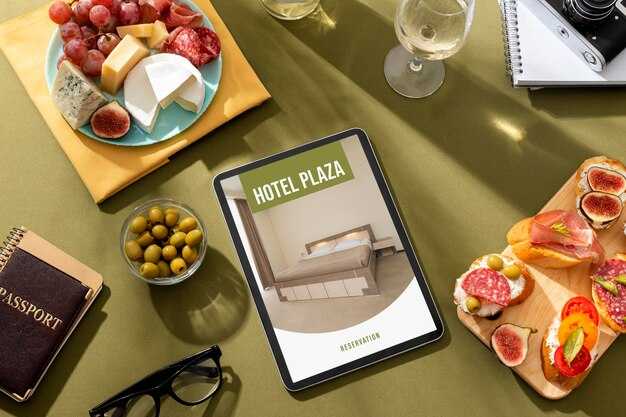
Start with a targeted plan to boost direct bookings now by tuning your hotel website for conversions, setting up robust analytics, and running weekly tests that generate a tangible gain. Share this plan with the president and leadership to secure buy-in, then align your channel mix around guest intent to quickly move visitors from interest to reservation.
Direct advertising spend should focus on choosing high-intent channels and property-specific audiences. Use a baseline of 2-4% of revenue for paid search and social, and set up multi-touch attribution to understand which touchpoints drive bookings. Track trends and adjust bids to maintain a steady gain per click.
To understand guest needs, implement a content plan that answers critical questions: where to stay, what to do nearby, and how to book directly. Use analytics to map the customer path, identify 15-25% checkout drop-offs, and refine messaging to lift direct bookings by 8-12% in the next quarter.
Next, curalate a 30-day content calendar that aligns with seasonal demand, local events, and your loyalty program. Include guest testimonials, property highlights, and promotions that drive direct bookings. Use targeted messaging across channels to reinforce your offer and maintain consistency.
Past campaigns offer a blueprint: review last year’s results, identify what delivered ROI, and reallocate 20-30% of the budget to top performers. Create fresh promotions and bundles that are easy to book online, then test them in a 2-week cycle to validate impact with analytics.
Plan to dive into data: set up dashboards for occupancy, average daily rate, RevPAR, and channel CAC. Monitor these metrics weekly and adjust creative and audiences to gain efficiency. Track words of your messaging to ensure consistency, and maintain a pleasant guest experience while optimizing advertising spend for incremental bookings.
Keep a customer-centric focus as you scale: offer targeted promotions, simplify the direct-booking path, and use analytics-driven recommendations to guests. Still, avoid clutter and ensure fast load times to capture attention quickly, with effort kept to a minimum.
In a data-informed approach, harness insights, stay focused on direct bookings, and keep a friendly tone as you promote your property. Use trends to anticipate demand shifts and adapt your plan, rather than reacting to every new feature. This method turns insights into bookings and accountability into gain.
12 Must-Have Hotel Digital Marketing Tips You Need in 2025; – 4 Develop Your Hotel’s Digital Marketing Channels
Launch a multi-channel plan today: optimize on-page content, build a Facebook-centric social play, grow your email CRM, and set up paid retargeting to drive direct bookings. This four-channel framework supports long-term retention and sustainable profits by turning traffic into conversions and interactions into loyal guests.
4 Channels You Must Develop
On-page and content optimization: accelerate site speed to under 3 seconds, implement structured data, and craft value-driven words in clear headlines. Build a 12-week content plan that covers accommodations features, local experiences, and seasonal offers, publishing two pages per month. Use curalate guest photos and reviews on product pages to build authority and influence booking decisions. Regularly check page speed, organic traffic, bounce rate, and conversion rate from page views to bookings, and adjust the plan accordingly. Keep a hand on the data by using a single dashboard to monitor performance across channels.
Social media focus (facebook and beyond): publish 3-4 posts weekly, host monthly live Q&A sessions, and promote guest stories and polls to boost engagement. Respond to comments and DMs within 24 hours to keep interactions high and show you value people. Measure reach, engagement rate, click-through to the booking page, and reservations attributed to social activity; use the data to refine your copy and prompts to promote more influence.
Email marketing and CRM: segment by past guests, stay history, and interests; send a welcome series within 24 hours of signup and two targeted emails per month with offers aligned to seasonality. Use value-based subject lines and copy that inspires someone to book again; track open rate, click rate, and booking conversions to ensure long-term retention and higher lifetime value.
Paid traffic and direct channels: run retargeting ads for visitors who checked rooms but did not book; test local search ads and promo codes for direct bookings to protect profits. Monitor CPA and ROAS weekly and tag all links with UTM to check attribution. Align promotions with demand signals to seize opportunity and push traffic directly to the booking engine.
Select the Right Channel Mix for Your Property Type and Guest Segments
Prioritize a direct channel core with a clear loyalty offering to maximize profitability, while backing it with a targeted mix of OTAs and meta-search partners. This article shows how to play the channels easier and to stand out with a powerful strategy.
Face the realities of your property type: urban luxury and boutique stays benefit from a strong direct site and a concise services offering to attract repeat guests, while family-friendly midscale properties gain reach with a curated set of links to engines and trivago listings to capture travel segments. Owners should keep their boundaries realistic and avoid overspending on any single channel.
Allocate budget with a realistic profitability target. A practical starting point for many properties: direct 25-40%, OTAs 40-60%, and organic and meta-search 10-20%. Run 12-week tests and iterate based on booked results and cost efficiency.
Create a cross-channel workflow that keeps the face of the property consistent across all touchpoints: pricing, policies, photos, and services must align; publish targeted posts regularly; ensure that booking engines links are working; keep the trivago listing up-to-date to maintain organic visibility.
Track booked rooms by channel, monitor profitability per channel, and adjust strategy every 6-8 weeks. This approach builds resilience and gives owners a clearer path to sustained growth.
Build a Channel-Specific Content Calendar for 2025
Set up a 12-month, channel-specific content calendar for 2025 in a shared workspace, assign owners, and establish quarterly reviews to keep teams aligned and accountable.
Map each channel to its role: facebooks for local awareness, organic Instagram posts for visuals, emails for direct offers, trivago listings for traveler intent, and a dedicated agency liaison for strategy alignment. Build audience segments and define goals for each touchpoint so interested guests can engage at the right moment.
For a channel cadence, mix organic posts with real-time notifications while you nurture the conversations that drive bookings. That specifically defines formats like room spotlight videos, local package announcements, and guest testimonials, and ensures interactions–comments, DMs, and reviews–receive timely responses to establish trust and keep guests interested.
Track trends and brand metrics across channels. Use a simple dashboard to monitor reach, engagement, and bookings driven by these posts. Define KPIs per channel: engagement rate for facebooks, saves and shares for Instagram, click-throughs to packages, and direct inquiries from trivago and the website. Defining these metrics helps teams stay focused on what moves customers.
Integrate property details and packages into posts. Highlight pet-friendly rooms, breakfast options, and family-friendly amenities. Upload clear photos, maps, and room details, and translate them into guest-relevant copy. Coordinate with trivago and OTA partners to synchronize updates so customers see consistent details across channels.
Coordinate with the agency to ensure brand voice stays consistent across facebooks and partner channels. Create a content bank with evergreen templates and seasonal assets so the team can publish quickly whenever trends shift or a new offer appears. Use notifications to alert teams when a post goes live or an inquiry arrives, and measure response times to keep interactions well managed.
Example quarterly plan: Q1 focuses on winter escapes and pet-friendly stays; Q2 leans into spring getaways and family packages; For each month, assign a primary channel, a content theme, and a call-to-action linking to the property details page or booking engine. This structure helps teams stay interested and aligned without duplicating content across channels.
Checklist to implement in week 1: set up the shared calendar, assign channel owners, create a templates folder, and build a one-page brief for each channel. Then run a 2-week pilot, gather feedback, and refine. This approach yields a well-coordinated, channel-specific plan that scales with property offerings and customer needs.
Streamline the Booking Funnel: Website, Mobile, and OTA Touchpoints
Consolidate booking steps into a single, friction-free flow across website, mobile, and OTA touchpoints to cut down abandonments and improve conversions across the most channels.
This approach outlines the user path from search to reservation, relating to how travelers use the internet to compare options. This article uses an outline to frame the actions and responsibilities for the team, including personalization, which drives relevance at each touchpoint.
In practice, the funnel involves three synchronized channels: website, mobile, and OTA touchpoints. The plan emphasizes a consistent flow, clear pricing, and simple data entry to reduce down time. Rather than relying on separate processes, you center the user in a cohesive experience that saves time and builds trust.
Key opportunities include simplifying forms, enabling guest checkout, auto-filling known data from your CRM, and offering one-click rebooking for past guests on amsterdam properties.
Outline the steps below to implement a cohesive booking path across devices.
- Deploy a single booking widget with cart persistence across website and mobile, so searches started on amsterdam listings transition smoothly to booking without losing progress.
- Align OTA touchpoints with the same rate logic, room types, and add-ons, and provide a clear path back to the official site for finalization.
- Leverage personalization to tailor offers based on search history, dates, and loyalty status, which increases relevance and conversion.
- Offer a guest-friendly sign-in or checkout flow to minimize data entry and speed up booking.
- Set up reminders and rewards: reminder emails or push notices for abandoned carts; rewards boosts conversions.
- Establish a simple test plan to refine copy, CTAs, and form length, and measure impact by device and stage.
- Assign ownership to a cross-functional team that tracks funnel metrics and holds weekly reviews.
Having the right tools and a small, capable team ensures you can establish accountability and move quickly. To understand user intent, analyze searches across devices and relate findings to the funnel outline. Adapt messaging and offers to the data, and keep the story consistent from first click to confirmation, so guests feel confident choosing you again over rivals on the internet.
Implement Simple Cross-Channel Attribution and ROI Tracking

Start with a lightweight attribution model that credits the last meaningful touch before a booking while distributing a portion of credit to earlier interactions. This drives clarity on which channels actually move the order and how traffic converts across touchpoints.
Outline the setup: tag campaigns with consistent UTM parameters, unify data in a single dashboard, and tie online activity to bookings by linking order IDs captured at checkout or via post-stay surveys. Start with a little pilot on a regional subset to validate assumptions. This provides a clean source of truth for ROI calculations, not just clicks. It also improves responding to shifts in traffic.
Outline for quick cross-channel setup
To keep it practical, michael from the analytics team and abby from the agency should co-create a short outline, assign responsibilities, and pick an attribution window (for example, 30 days post-click). Use apollo to harmonize signals and align on a common naming convention so youre able to report on the same metrics across teams.
Metrics, ownership, and next steps
Use demographics signals to refine targeting and adjust spend by age, location, and device. This enables you to match campaigns to high-value guest segments and grab incremental revenue from returning guests. Build a simple weekly dashboard that shows ROI by channel, campaign, and creative, and provide a concise article with takeaways for leadership to review every month. youre turning data into actions that boost occupancy and average daily rate while staying within budget. This sets you up for a future-ready, scalable attribution framework.
Automate Personalization and Retargeting Across Email, Social, and Ads
Set up a centralized automation engine that personalizes emails, social posts, and ads within hours of guest action, using a single guest identity to drive room-tailored offers across channels. Across the world, travelers expect relevance and speed. This keeps messages relevant and attracts bookings. This article outlines practical steps with concrete targets and examples.
Link PMS, CRM, site analytics, and ad data so data brought from many touchpoints powers dynamic content. A reminder fires for past visitors who browsed rooms but didn’t book, nudging them with a direct offer and a fresh date window. This requires clear hand communication between teams to keep these messages coherent.
A solid data framework sets the foundation: combine past stays, room types, and browsing activity into guest profiles. Creating these profiles lets you differentiate offers by segment and optimize subject lines, visuals, and calls to action. The result is better understanding of guest needs and higher engagement rate.
Ignore generic copy and lean into relevance. Just as important is keeping messages lean, well-timed, and respectful of guest preferences; this builds your reputation over time and reduces needless churn.
Implementation steps

1. Map signals from reservations, on-site browsing, and post-stay surveys; unify them into a single identity to support cross-channel outputs.
2. Create segments around past stays, room types, booking windows, and engagement history. These sets let you tailor offers and reminders without overlap.
3. Define triggers for email, social, and ads: post-booking follow-ups, check-in nudges, last-minute offers, and cart-abandonment re-engagement. Link each trigger to ensure consistent creative.
4. Build dynamic content blocks and templates that pull guest data (room, dates, services) and show relevant options to attract interest and conversions.
Measurement and cadence
Track open rate, click rate, and conversion rate by channel; adjust cadence to maintain momentum without irritating guests. Use A/B tests to compare subject lines, visuals, and offers across email, social, and ads, and apply the learnings to future campaigns. A clear reminder plan reduces dead leads and keeps you ahead of competitors.
| Channel | Tactic | Target lift | Frecvența |
|---|---|---|---|
| Dynamic blocks and personalized subject lines | Open rate +15–25% | Per send | |
| Social | Audience retargeting by site activity | CTR +0.5–1.5% | Weekly refresh |
| Ads | Sequential offers based on past stays | ROAS +10–25% | Monthly review |


Observații